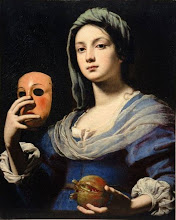
The power that has created you, the power that has given you all these three powers: Ida Nadi, Pingala Nadi or Kundalini Shakti, the one which is the desire of all that. We can take a simile just to understand it: the owner of the house... supposing the owner of the house walks into the house with his money and creates everything he wants to do about his house. Now the master goes out, he’s not there, when you see a house, you see the power of all the workmen who have done the job, somebody who has established everything. But you don’t know whose desire it has been. In the same way you have seen your body being created, you even see the mind that you have got, you can see your emotions that are there, of course, you can also see you’re a human being, you can also see you’re much far away from the animals. And if you have some wisdom, you understand also you’re much wiser than anything that is created so far. But the power of desiring, desiring power, or we can say the projecting power, or the one who is the owner of all that, the owning power, He is… And then His power of desire, Maha Kali’s power, is His desire, then manifests everything else. His desire, He manifests, His Maha Kali power, that you see here on the left-hand side, manifested in the human being as Ida Nadi, creates all the rest of the universe and everything later on. But first it’s only the desire. But the one who desires, in us He is placed in our heart, away from all this. And He just desires. We do not know Him, but He knows us. We know one thing, definitely, that He knows us. There is someone who is definitely watching us, as in the Gita, the one who is the Knower of the field. The Knower of the field is that. Once you also become the knower of your field, you are Self-realized. This is Self-realization.
...Till you reach the state of Self-realization you’re not aware of it, you cannot control it, you cannot work it out; it works by itself. That part the doctors call it as autonomous nervous system, and the psychologists as unconscious.
After realization only the whole thing becomes your own, in the sense, you change sides. So far you have been looking at things from there, but this principle of Brahma, It can be in such a mood that It has no duty, It just exists. It has no duty. It is not the duty of an owner of a house to do something about it, it is his whim, if he wants to do it, he’ll do it, otherwise he’ll live like a hermit. He has no duties. I hope you understand the meaning of the owner, because the human laws are funny - whatever, you may be the owner, still you can’t do many things. But if you can think of an absolute owner of the place, absolute owner.
- Shri Mataji Nirmala Devi, 1978, England





























